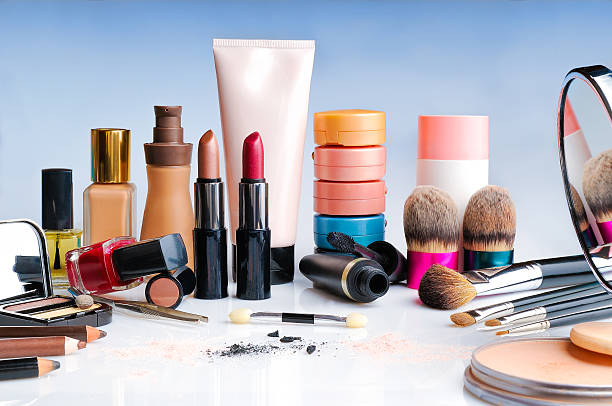Cosmetics have been an integral part of human culture for thousands of years, evolving from simple natural pigments to sophisticated beauty products. The history of cosmetics reflects changing social norms, technological advancements, and shifting beauty ideals. Here’s a journey through the decades to explore how beauty trends have transformed over time.
### **1. Ancient Beginnings: The Birth of Cosmetics**
**Ancient Egypt (c. 3000-30 BCE)**
The earliest known use of cosmetics dates back to Ancient Egypt, where both men and women used makeup for beauty and ceremonial purposes:
– **Eye Makeup:** Egyptians are famous for their use of kohl, a black substance made from lead or antimony, to outline the eyes. This not only enhanced their appearance but also protected their eyes from the sun’s glare and had antibacterial properties.
– **Skin Treatments:** Egyptians used natural ingredients like honey, milk, and olive oil to moisturize and protect their skin. They also employed clay and mineral pigments to create vibrant face paints.
**Classical Greece and Rome (c. 800 BCE – 500 CE)**
In Ancient Greece and Rome, cosmetics were used to enhance one’s natural beauty:
– **Face Powders and Rouge:** Greek and Roman women used white lead-based powders to lighten their complexion and red ochre for blush. However, the use of toxic substances like lead eventually led to health issues.
– **Hair Care:** Hair dyeing and styling were popular, with both genders using various powders and oils to achieve desired looks.
### **2. The Renaissance and Enlightenment: Beauty Becomes Art**
**Renaissance (14th – 17th Century)**
The Renaissance period saw a shift in beauty standards and the introduction of new cosmetic practices:
– **Complexion Perfection:** Pale skin was highly desirable, symbolizing wealth and nobility. Women used lead-based powders, such as Venetian ceruse, to achieve a white complexion, despite its harmful effects.
– **Elaborate Hairstyles:** Hair was styled into elaborate shapes and adorned with accessories like pearls and ribbons. Wigs also became fashionable, particularly in France.
**Enlightenment (18th Century)**
The 18th century continued the trend of opulence in cosmetics:
– **Powdered Wigs and Rouge:** Both men and women wore powdered wigs and used rouge to add color to their cheeks. The use of cosmetics was extravagant, with beauty routines becoming increasingly elaborate.
– **Scented Products:** Perfumes became more popular, with various floral and herbal scents used to mask body odors and complement the wearer’s fragrance.
### **3. The 19th and Early 20th Centuries: Innovation and Accessibility**
**Victorian Era (19th Century)**
The Victorian era brought a more subdued approach to cosmetics:
– **Natural Beauty:** During this period, makeup was often associated with lower social classes or actresses. The ideal of natural beauty prevailed, and many women avoided visible makeup.
– **Health-Conscious Products:** With growing awareness of the dangers of toxic substances, there was a shift toward more health-conscious beauty products.
**Early 20th Century**
The early 20th century marked significant changes in the cosmetics industry:
– **Hollywood Glamour:** The rise of Hollywood and the film industry popularized glamorous looks, with stars like Marilyn Monroe setting trends for red lips and bold eye makeup.
– **New Innovations:** The introduction of mass-produced cosmetics made beauty products more accessible. Innovations like the lipstick bullet and automatic mascara applicators revolutionized the industry.
### **4. Mid to Late 20th Century: The Rise of Modern Beauty**
**1960s and 1970s**
The 1960s and 1970s were characterized by bold and experimental beauty trends:
– **Mod Look:** The Mod movement introduced dramatic eye makeup with heavy eyeliner, false lashes, and vibrant eyeshadows. Twiggy, a famous model of the time, epitomized this look.
– **Natural and Bohemian:** The 1970s saw a return to natural beauty, with minimal makeup and an emphasis on a healthy, sun-kissed look. The bohemian style also influenced beauty trends with earthy tones and minimalism.
**1980s and 1990s**
The 1980s and 1990s were marked by diverse and dynamic beauty trends:
– **Bold and Bright:** The 1980s embraced bold colors, with bright eyeshadows, heavy blush, and strong contouring. The decade also saw the rise of iconic beauty brands and the popularity of supermodels.
– **Minimalism and Innovation:** The 1990s introduced more minimalist looks, focusing on nude tones and natural beauty. New formulations, such as long-wearing lipsticks and foundation with SPF, became popular.
### **5. 21st Century: Diversity, Inclusivity, and Technological Advances**
**2000s to Present**
The 21st century has brought a focus on diversity, inclusivity, and technological advancements:
– **Diverse Beauty Standards:** Modern beauty trends celebrate a wide range of skin tones, facial features, and styles. The cosmetics industry has expanded its offerings to cater to diverse consumer needs.
– **Sustainable and Ethical Beauty:** There is a growing emphasis on sustainability and ethical practices, with brands focusing on cruelty-free products, eco-friendly packaging, and clean beauty ingredients.
– **Tech-Driven Innovation:** Advances in technology have led to innovations such as virtual try-on apps, personalized skincare solutions, and AI-driven beauty recommendations. These technologies enhance the shopping experience and help consumers find products suited to their individual needs.
### **Conclusion**
The evolution of cosmetics reflects changing beauty standards, technological advancements, and cultural shifts. From ancient Egypt to the digital age, cosmetics have continuously adapted to meet the desires and needs of their users. As we look to the future, the cosmetics industry will likely continue to innovate and evolve, embracing new technologies and fostering inclusivity in beauty standards. Understanding this rich history provides a deeper appreciation for the products we use and the trends we follow, highlighting how cosmetics have always been, and will continue to be, a reflection of our ever-changing world.
